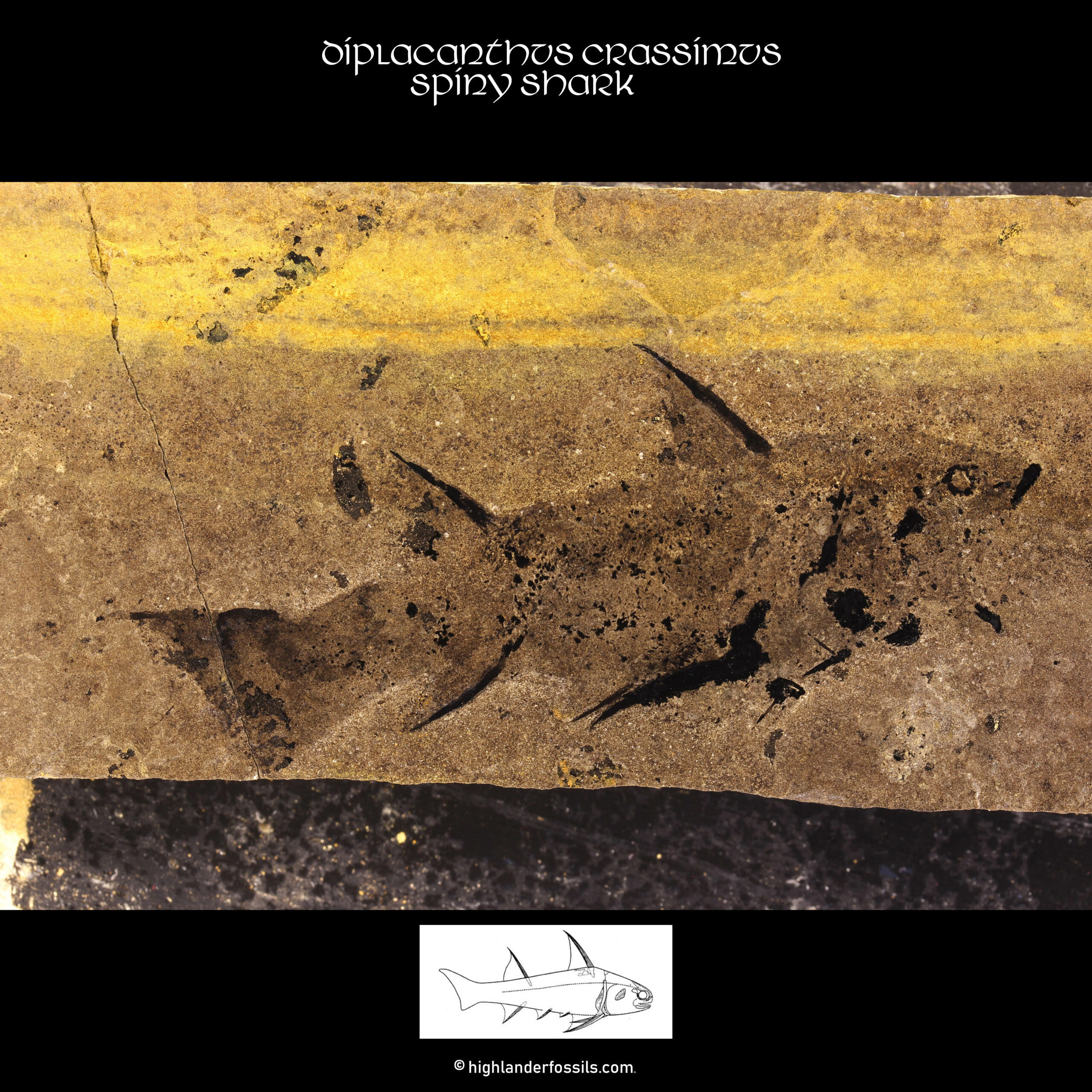Description
Diplacanthus crassisimus
Physical Description
Diplacanthus crassisimus is also an acanthodian. It is a small fish ranging from 10 mm to about 150 mm. D. crassisimus is characterized by particularly long dorsal fin spines. The spines on its pectoral, pelvic, prepelvic, and anal fins were smaller but nevertheless large when compared to most other acanthodians.
Age and Distribution
Diplacanthus is from the Middle Devonian of Scotland. This fish lived approximately 385 million years ago. At the time this area of Scotland was part of the Orcadian Basin, which was a huge complex of lakes that stretched for hundreds of miles. During this period plants started to rapidly colonize the land and fishes dominated nearly every niche of seas and lakes, hence why this period is also known as the “Age of Fishes”. Diplacanthus crassismus co-inhabited the lake with other fishes like the acanthodian Mesacanthus, the osteolepids Gyroptychius, Osteolepis, and Thursius, the porolepid Glyptolepis, the lungfish Dipterus, the enigmatic Palaeospondylus gunni and the placoderms Dickosteus, Coccosteus, Pterichtyodes, Rhamphodopsis and Homostius.
About the Acanthodii
Evolutionary Significance
The Acanthodii are among the earliest jawed vertebrates known in the fossil record. The oldest acanthodians found are from the Lower-Silurian. This group disappears from the known fossil record at the Permian-Triassic extinction event, long after they had already dwindled in diversity.
Taxonomy
Diplacanthus crassisimus belongs to the Diplacanthidae which is a subclass of the Acanthodii (‘spiny sharks’, which means that, though they also had a skin cover of denticles, it is uncertain that they are closely related to sharks). Other Diplacanthidae from Middle-Devonian of Scotland are: Diplacanthus tenuistriatus and Rhadinacanthus longispinus.






